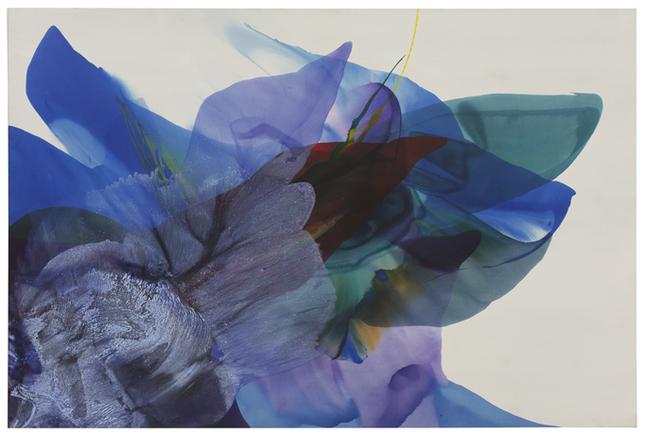Skirting Gravity’s Edge At The Hirshhorn
By • May 9, 2014 0 1025

It is mesmerizing to walk into a room occupied by raw, pure and simple color. In the same way that the smell of the ocean pulls us in and triggers a deep connection to our natural surroundings, there is a sensation in seeing plain color, unrefined and unadulterated by subject matter or concepts, that brings us closer to the very state of our senses. It is almost involuntary the way it attracts us—color is fundamental to the way we experience the world and so we cannot help but react to it. Over centuries, artists have fought with it, innovating new modes of thinking and creation in pursuit of its depiction. Particularly over the past century, from the groundbreaking early 20th century works of Russian artist Kazimir Malevich, to the color fields of Mark Rothko and the austere minimalism of Ellsworth Kelly, painters have developed brilliant and intoxicating approaches to communicating in the language color.
With Gravity’s Edge, on view through June 15, The Hirshhorn shines light on a time between 1959 and 1978 that signaled a shift in the way leading contemporary artists began approaching and perceiving color and abstraction. While throughout the 1950s the Abstract Expressionists focused on projecting personal ideologies and exploring their inner psychology through color and shape (greatly inspired by the writings of psychologist Carl Jung), this new generation of abstract painters moved away from these notions, giving prominence to and inspiring renewed emphasis on materials and technical processes. Led by artists Helen Frankenthaler, Morris Louis and Kenneth Noland, these artists began exploring the space of a painting in new ways, using both the force of gravity and the edge of the canvas as means of challenging the spatial and perceptual limits of their work.
They experimented with the way the paint bled down their untreated linen canvases, tilting it at different angles and letting the paint run out to the edge. They focused more intently on the edge in general, often painting around the canvas in the corners and along the perimeters, leaving the center empty and unpainted, which created illusions of both strict containment and endless expansion.
These effects, however, are very subtle, and the paintings generally feel quite simple. This is not to generalize or shrug off the more difficult, esoteric responsibilities of criticism, or to lazily thumb a nose at the frequent weariness and skepticism with which many viewers meet certain paintings such as these. This is just to say that despite and also in consideration of these perhaps lofty ideas, I believe that these paintings are meant to be approached simply and from the heart.
Along the walls of this exhibit, color and form are given the chance to radiate. The curved, diagonal lines in the paintings of Morris Louis, brightly hued and loose-edged, are soothing and playful. Helen Frankenthaler’s coarse layering of colors in messy blocks are wonderfully childlike in the way they search and explore such simple shapes and colors with thorough but spontaneous vitality. The graceful, organic outbursts of Paul Jenkins’ color washes are like flowers blooming with the explosive energy and immediacy of a firework.
A relative eschewing from so many exhibits on display in Washington right now, which are suffused with ambitious subjects and historical content (which is far from a denouncement but nevertheless quite prevalent), this is a show of art for the sake of art. It is for those of us who want to sit in front of a painting and let it wash over us. Frankly, it is a wonderful departure from the oversaturation of media and information that pervades our computers and trickles inevitably into our thoughts. Gravity’s Edge is a chance to lift that burden for a brief while, ignore the typical gnawing of time constraints and justification, and revel in something indefinably satisfying.
These paintings are beautiful and inspiring. Just enjoy them—there is much to love.

